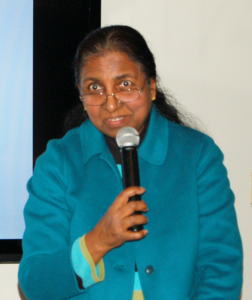03 Aug Embedding Intersectionality into Gender: GMMP 2020

Glory E. Dharmaraj, Ph.D. GMMP Coordinator USA. President, WACC North-America
The dual shadow cast by Covid-19 pandemic and the death of George Floyd, an unarmed black man, by police brutality has made many of us in the United States of America “see” things which often go unreported or underreported in the media landscape. The dual pandemic has unveiled social inequities as never before. News media have been relentlessly capturing evolving impact stories of Covid-19 as well as systemic racism.
It is under the shadow of this two-fold pandemic and unveiling of structural inequities that the Global Media Monitoring (GMMP) 2020 will take place in the U.S.
Intersectionality & Gender
The GMMP has come a long way in becoming a conscientizing tool in assessing fair and accurate representation of women and girls in media. The results of GMMP 2005, in particular, shed light on a key lack in gender coverage. That is, though women were physically visible in news media coverage, female perspectives were missing in the news stories. In GMMP 2015, women’s presence in digital media was more pronounced particularly in internet and twitter news.
Mere presence of women does not guarantee diverse women’s perspectives.
Qualitative analyses of various female perspectives, especially under this dual pandemic, necessitate a critical framework known as intersectionality. A practice and a lens named and popularized by Kimberlé Crenshaw in 1989. A lawyer by profession, Kimberlé who worked among battered women, especially African American women, named an experience which these women embodied. That is, multiple layers of oppression due to their race, class, sexuality, language, locality etc. These multiple oppressions intersected in the everyday lives of these women at the margins.
The current dual pandemic has brought into focus this complex reality, and calls for social justice with varied responses, from the streets to the political aisles.
Who is counted out?
I wonder whether we will be able to gather women’s perspectives from diverse social locations such as racial, ethnic, migrant, class, sexual, and other backgrounds, on the day of monitoring that would offer a fuller and complex understanding of women’s images and representation in media. Political forces to count out the undocumented migrants for the U.S. Census are into play now.
Who is counted out matters more than who is counted in.
Our “special questions” in the forthcoming GMMP include queries on identity markers such as race/ethnicity, disability, and immigrant/migrant in the coverage of news.
A way to monitor and promote a balanced and non-stereotyped portrayal of women in the media.
Glory Dharmaraj, Ph.D.

No Comments